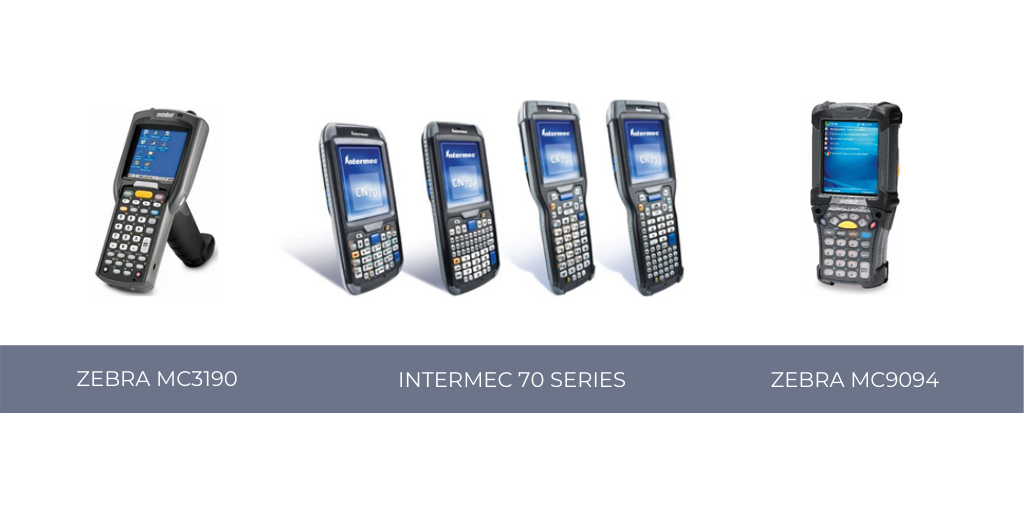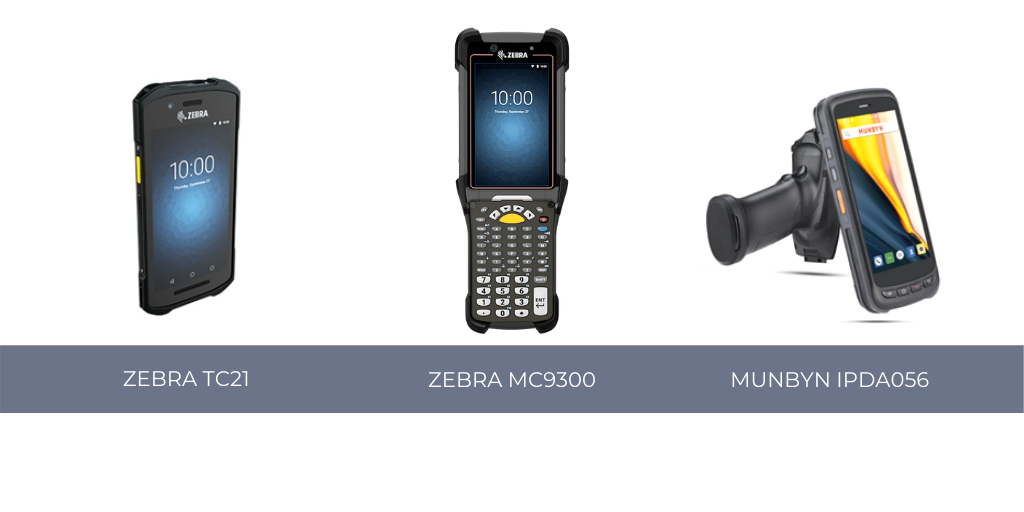Buyer’s Guide: Current Trends in Mobile WMS Devices
Editor’s note: This article was contributed by Jose Yoniel “Yoni” Garcia, Magaya Chief R&D Officer, Co-Founder, and Board Member. Yoni has been deeply invested in the topic as of late, working hard with the R&D team on the next generation of Magaya’s mobile WMS solution, Flow WMS. Yoni’s commitment to technical excellence and innovation has been paramount to Magaya’s growth and success over the past twenty years and are certain to position Flow WMS as a wave-making solution in the industry.
Summary
• Since 2018, Microsoft has been gradually phasing out support for Windows CE, which was the most popular operating system for enterprise handheld devices for many decades prior.
• As a result, mobile device manufacturers have pivoted to building updated devices that run on an Android operating system.
• This new generation of devices offers phenomenal computing power in a small form factor, increased performance, and ease of use, among many other advantages. But, it is completely incompatible with legacy applications.
• Accordingly, software vendors have been forced to find alternatives to re-engineer legacy applications to work on the new platforms.
• New changes pose new challenges – but also bring new opportunities.
Mobile WMS (warehouse management system or warehouse management software) devices are used for a wide range of warehouse processes, from inventory management and cycle counts to shipping, receiving, and more. Providing visibility and actionable data throughout the warehouse facilities, mobile WMS can save time, boost productivity, and help keep orders and inventory accurate. However, the industry is going through a fundamental shift that has the potential to multiply these benefits exponentially, making way for innovative new hardware and software solutions.
In this buyer’s guide, we discuss the transition that the supply chain industry is going through when it comes to warehouse mobility. With software developers having to rebuild WMS applications and warehouse operators reinvesting in new hardware, there exists an important opportunity for tremendous advancements in warehouse productivity, ROI, and user experience for warehouse employees.
Devices Traditionally Used in Warehouse Mobility
Launched in 1996, Microsoft Windows CE (Consumer Electronics) was designed to run on handheld computers and other embedded systems. Later, it was renamed Windows Embedded CE and Windows Embedded Compact. Notwithstanding the flavors, most people refer to it as Windows CE. There is also the less-popular Windows Mobile, which, for the sake of simplicity, we will not cover in this guide.
Windows CE only supports a small subset of the well-known Win32 API and is complemented with specialized APIs for embedded solutions. Device manufacturers could create a custom image of the operating system from many available components, including only the needed functionality for their devices.
Over the last two decades, many manufacturers (Zebra, Honeywell, Intermec, etc.) have created a variety of enterprise handheld devices based on the Windows CE operating system using different form factors, such as gun grip, handhelds, wrist wearable, vehicle-mounted, etc.
Here are some examples:

These devices are known to have several limitations, including:
• Low computing power
• Low memory, in most cases under 512MB
• No cameras or very low camera resolution
• Difficult to use keyboards, which makes it much harder to train warehouse operators
• Hard to configure the Wi-Fi connection
• Low Wi-Fi range requiring more antennas in the warehouse
• Low screen resolution
• High entry-level cost
• Etc.
Even when we had a multitude of options to choose from, it was still very difficult for WMS software developers to write a user-friendly mobile app for these devices in a way that could be built and deployed efficiently to customers. It is still very common to see telnet (black screen) applications running in the devices of many warehouses, especially in retail businesses.
Microsoft Discontinued Support for Windows CE
As a strategic decision to focus on other areas of the business, Microsoft has ended all forms of support for the Windows CE operating system. The extended support that is currently available for some versions (for example, Windows Embedded Compact 2013) is slated to end in 2023. This means that enterprises and software vendors must have a migration strategy in place.
The devices running legacy software will continue to function; however, Microsoft will not be releasing more updates, security patches, or any kind of support for these operating systems. This puts businesses at risk.
Unfortunately, Microsoft did not provide a migration path, forcing software developers to rewrite legacy applications for new platforms. Software migration is not a simple endeavor: it will require a holistic approach to the existing landscape to prevent being trapped into a dead-end once again.
Google Android to The Rescue
Thankfully, since 2010, Google has been ramping up its Android operating system as the platform of choice for mobile WMS app solutions, with a steadily growing market share. Many device manufacturers have started to adopt the modern Android operating system as their platform of choice to build the new generation of enterprise handheld devices.
The transition to Android brings about a wealth of advantages to businesses and users alike. For businesses, upgrading to new devices will have the advantage of improved computing power and performance. For users, the migration will make way for the intuitive interface that many people use already on their smartphones to enter the workplace.
New Generation of Devices for Warehouse Mobility
Device manufacturers saw the forced challenge as an opportunity to innovate and design modern, powerful, and user-friendly devices with excellent capabilities powered by Android OS. These new WMS devices are day and night compared to what we had before. Plus, as more manufacturers taken an interest, competition has increased, bringing a much wider spectrum of options to the market, providing an affordable entry-level cost for many businesses.
Here are some examples:

Some of the various advantages of these devices are:
• Strong performance
• Superior memory, with 4GB+ standard in most cases
• High camera resolution
• Better screen resolution
• Easy to configure Wi-Fi network connectivity and other settings
• Wi-Fi range similar to a smartphone
• Improved security protocols
• 1D/2D scanning in most devices
• Superior voice quality and functionality
• Usability is similar to smartphones, providing much easier training for operators
• Etc.
Opportunity for Application Developers
When building a new application for these modern devices, developers are faced with different challenges, one of the biggest being, “what could happen if manufacturers decide to change to another operating system in the future: will we have to re-write the application again?”
There are a few solutions to this problem, but one of the best approaches we have seen is to write the new WMS mobile applications with a cross-platform development mindset. Fortunately for the industry, Microsoft was proactive in offering a solid solution to this challenge: a Microsoft framework called Xamarin that is available to application developers. Developers can write code using the .NET framework and reuse up to 90% of the source code to target Android and iOS devices at the same time.
Building multi-platform applications with Xamarin and .NET and deploying them easily to Google Play and the Apple App Store is a great way to efficiently deliver application updates to all users.
What About Apple?
With about 1/3 of the total market share for consumer mobile phones, it’s only natural for Apple iOS devices to make their way into the workplace. However, Apple does not currently build rugged devices for warehouses or OEM accessories for ruggedization. There are several manufacturers that have risen to the occasion, building rugged cases with integrated barcode that can convert any iPhone into an efficient handheld device for the warehouse. That paves the way for any device owned by warehouse staff to be used for business processes, extending the power and reach of the WMS software, and delivering a faster return on investment.
Bring Your Own Device (BYOD)
With device-agnostic and OS-agnostic WMS software, warehouse operators can make use of existing hardware, eliminating the barrier of entry that comes with the cost of specialized hardware. Small businesses can even take advantage of their personal devices for warehouse management functions, benefitting from the productivity boost of mobile WMS without the hardware investment.
The Way Forward
The WMS mobile software and hardware industry are innovating at a phenomenal pace. The decision that Microsoft made to end support for its Windows CE operating system set off a domino effect of actions and reactions, inciting significant improvements in the technology now available for warehouse management.
If you are still relying on Windows CE for your mobile warehouse management system, now is the time to start evaluating other options, engaging with application vendors, and assessing needs and objectives. In the end, the results of the shift away from Windows CE will be tremendously positive for warehouse operators, bringing increased efficiency, ease of use, and value.
How Magaya is Evolving
Coming soon from Magaya, Flow WMS is the next generation mobile of warehouse management software that is fully compatible with Android and iOS operating systems. Its flexible workflows give you complete control of warehouse processes, going beyond basic warehouse inventory control to deliver new heights in productivity. You’ll benefit from the latest technology, an intuitive user interface, and real-time updates with the freedom of handheld mobility.